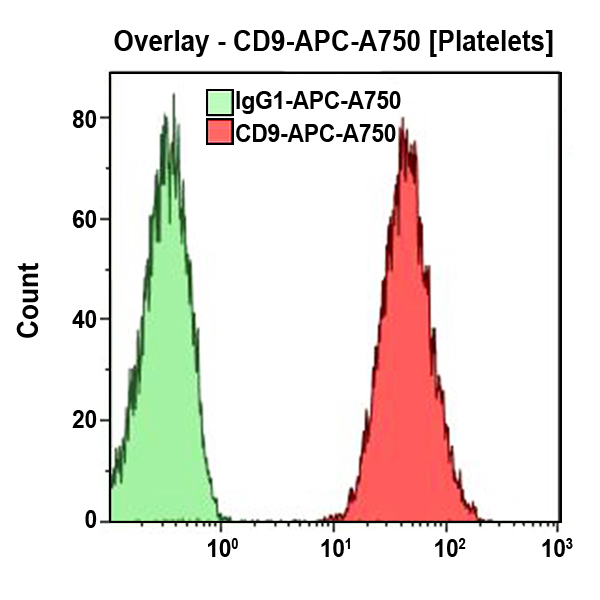CD9 Antibodies
CD9 (p24 antigen) is a single transmembrane polypeptide of 24 kDa related to the tetraspanin (TM4) family. Like other tetraspanins (e.g. CD63, CD81, CD82, CD37, CD53, among the 20 known members), CD9 structure is composed of 4 transmembrane domains, with intracellular N and C termini. First discovered on a lymphoblastic cell line of pre‑B phenotype, CD9 was then found on platelets and within their α‑granules, on monocytes, pre-B cells, eosinophils, basophils and activated T cells. The CD9 molecule associates with other surface proteins such as the α6/β4 integrin (CD49f/CD104 molecule) and HLA‑DR, suggesting a role in adhesion, signal transduction and cell motility.
| Clone: ALB6 | Isotype: IgG1 Mouse |
| The ALB6 monoclonal antibody (mAb) was first reported as specific for CD9 (p24) on platelets, capable of modulating aggregation of platelets activated with various agonists. |
|






